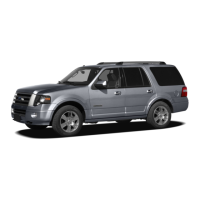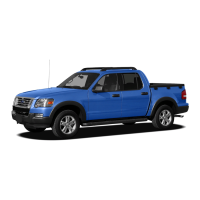
 Loading...
Loading...
Do you have a question about the Ford 2010 Expedition and is the answer not in the manual?
| Brand | Ford |
|---|---|
| Model | 2010 Expedition |
| Category | Automobile |
| Language | English |
Detects wheel lockup during braking and compensates to prevent it, maintaining control.
Monitors vehicle systems and alerts to potential problems with informative messages and chimes.
Explains manual controls for heating and air conditioning, including temp and airflow.
Details automatic temperature control for driver, passenger, and rear compartments.
Explains how to operate headlamps and parking lamps.
Describes automatic control of exterior lights based on ambient light.
Controls windshield wipers and washers, including speed and rain sensing.
Controls power windows for opening and closing, including one-touch operation.
Allows maintaining a set speed without using the accelerator pedal.
Controls various radio features and phone functions.
Allows opening/closing the rear liftgate via buttons or remote.
Explains the function of Integrated Keyhead Transmitters (IKTs) for starting and locking/unlocking doors.
Controls for locking and unlocking all vehicle doors.
Details steps to enable/disable the automatic door lock/unlock feature via the power door lock switch.
Prevents rear doors from being opened from the inside.
Complies with FCC/Industry Canada rules for remote entry operation.
Details using the factory or personal code to unlock/lock doors and liftgate.
Immobilizes the engine to prevent unauthorized starting.
Allows programming restricted driving modes to promote good habits.
Provides solutions for common MyKey™ programming and usage issues.
Allows automatic positioning of driver seat, mirrors, and pedals to programmable memory positions.
Provides instructions on how to properly use child safety restraint systems.
Details how to install child safety seats using LATCH or vehicle seat belts.
Discusses tire design for service life and handling.
Explains how to properly inflate tires for safe operation and optimal performance.
Advises on tire age and replacement to prevent failures and injury.
Details requirements for replacing tires and wheels with appropriate sizes and types.
Discusses hazards like tire blowouts, loss of control, and vehicle rollover.
Guides on proper vehicle and trailer loading to stay within weight limits.
Defines payload and explains how to calculate available cargo and luggage load capacity.
Explains how the system monitors tire pressure and warns of low pressure or system malfunction.
Details how the TPMS measures and sends tire pressure readings to the vehicle.
Explains the ABS system, normal operation noises, and malfunction indicators.
Describes the AdvanceTrac system for enhanced stability and its features.
Explains Traction Control system's function to help avoid wheel spin and loss of traction.
Explains ESC system's function to improve directional stability during adverse maneuvers.
Explains RSC system's function to help maintain roll stability during adverse maneuvers.
Explains the operation of the 4WD system and its modes.
Details the complimentary roadside assistance program offered by Ford.
Describes the fuel pump shut-off switch and how to reset it after a collision.
Provides safety precautions and step-by-step instructions for jump-starting a vehicle.
Lists safety precautions to follow when servicing the vehicle.
Details how to check and add engine oil, including precautions.
Describes Ford ESP extended service plans offering protection beyond the new vehicle warranty.











